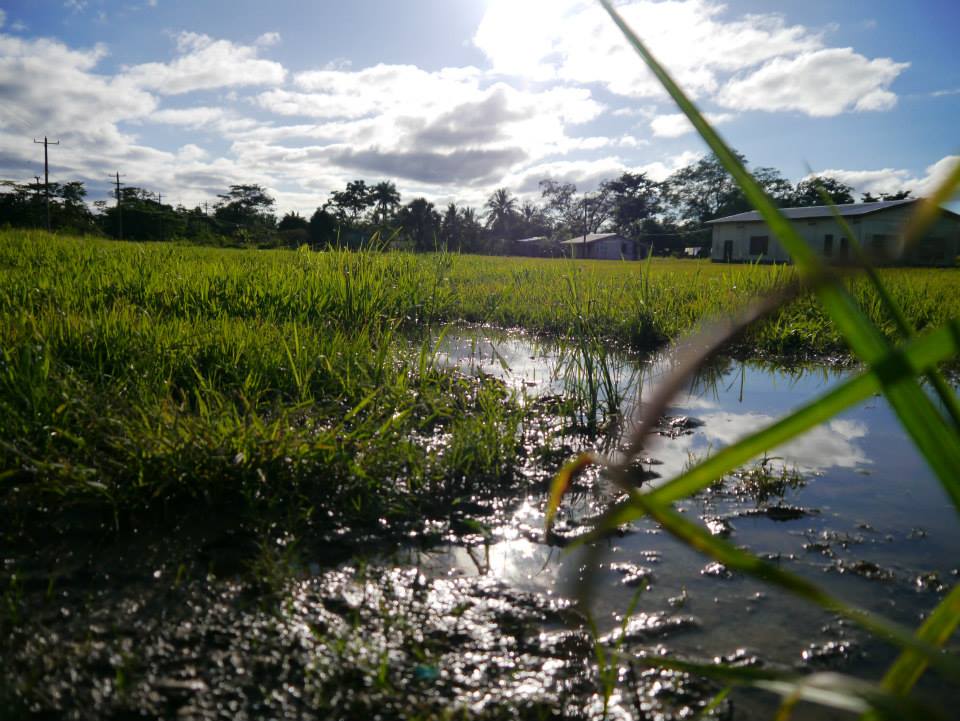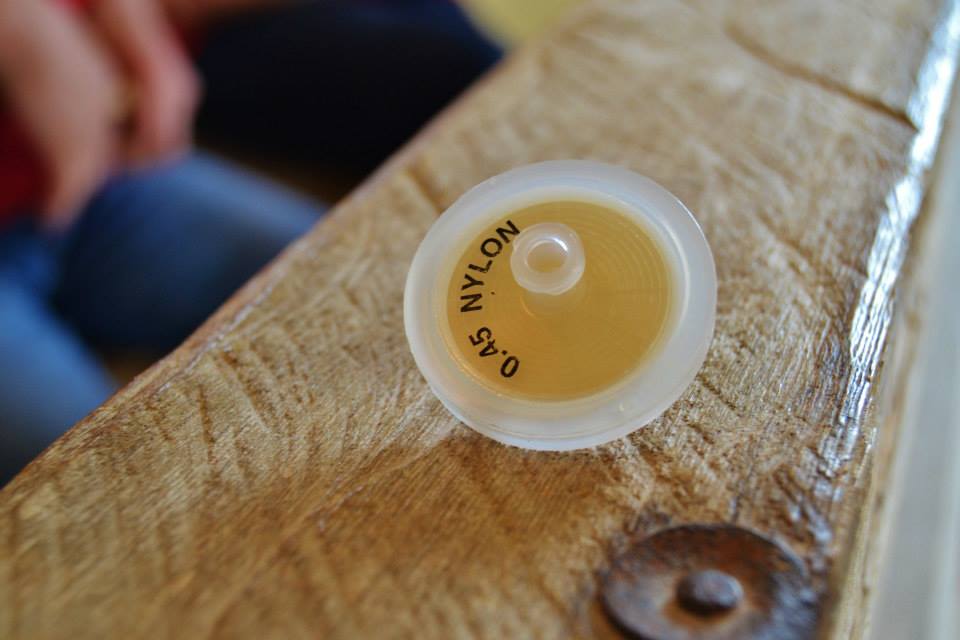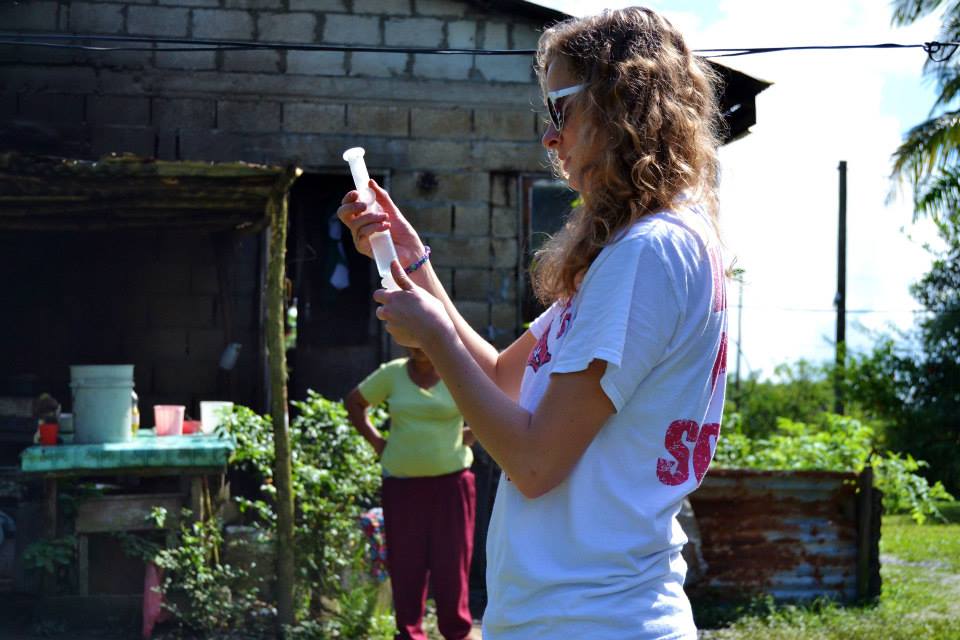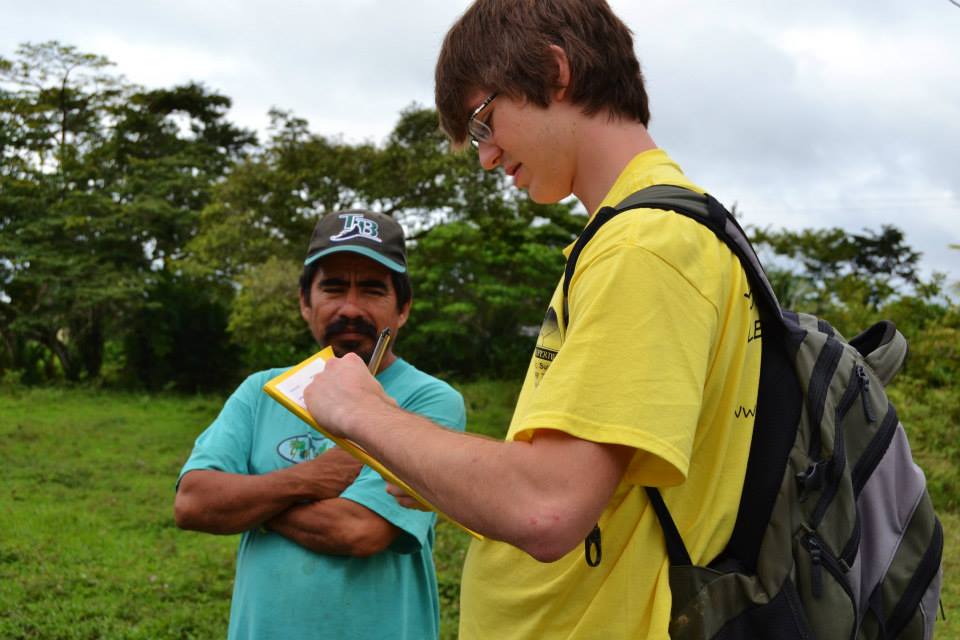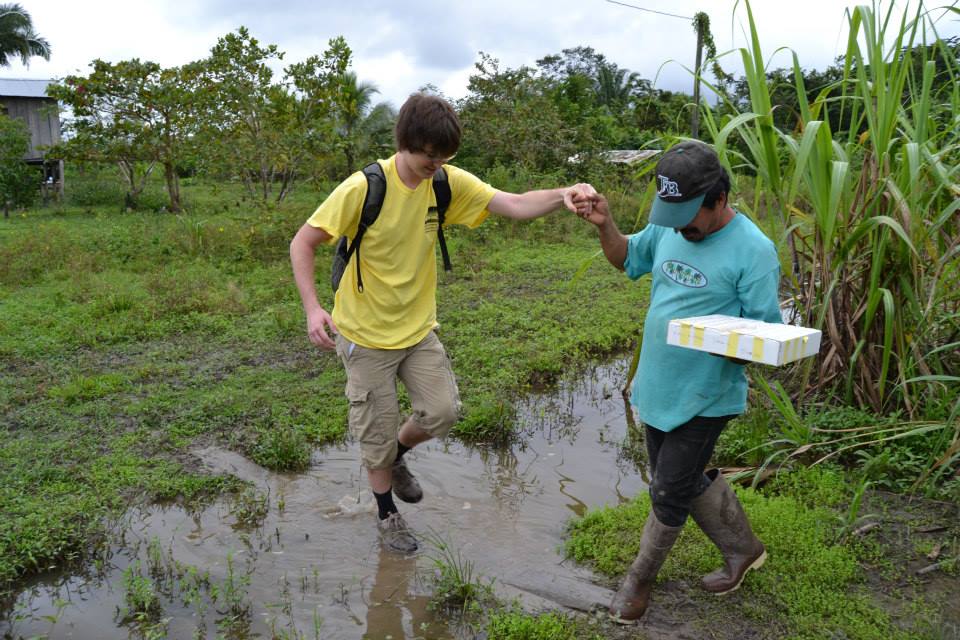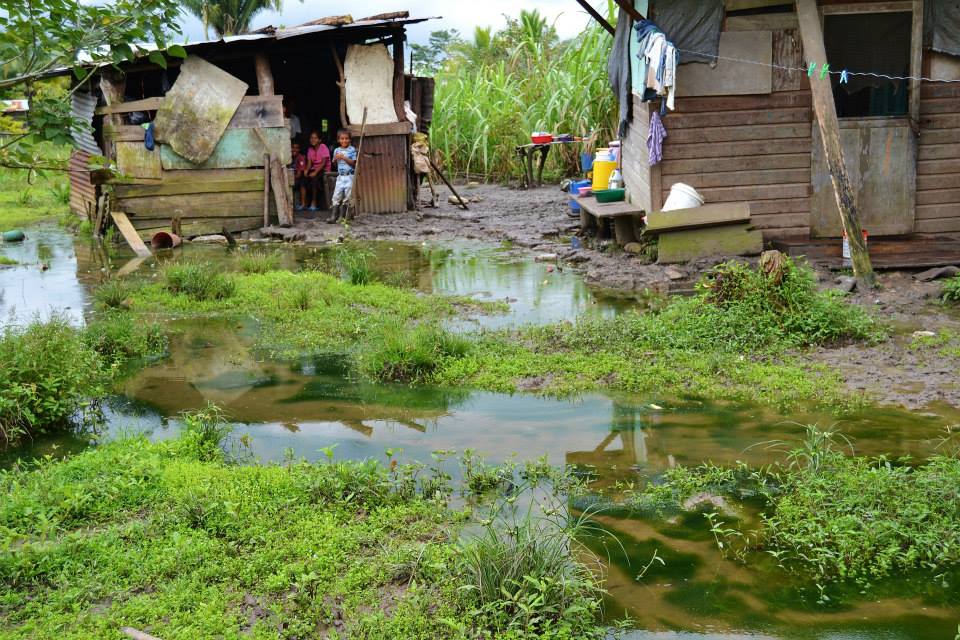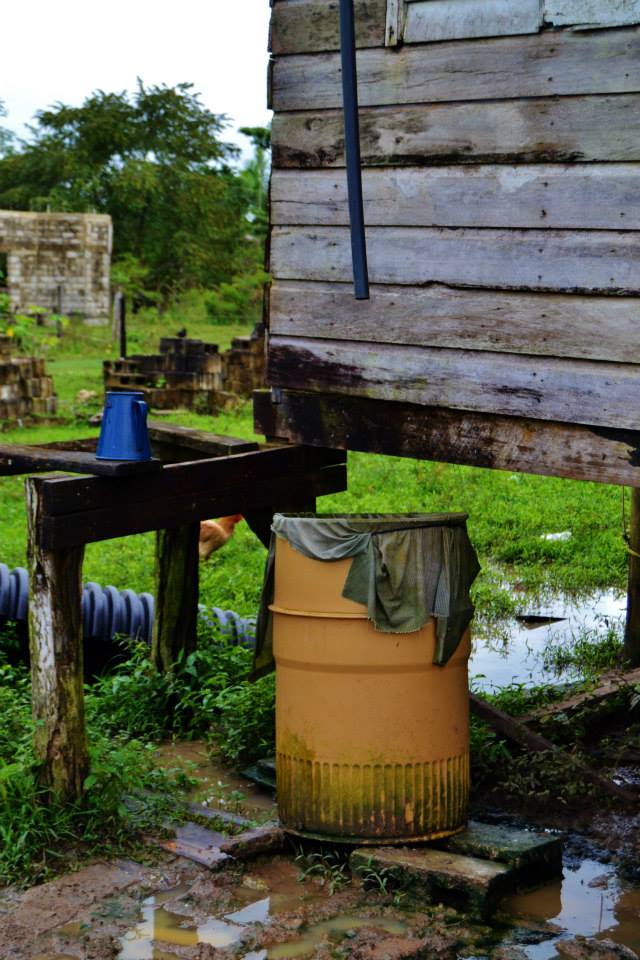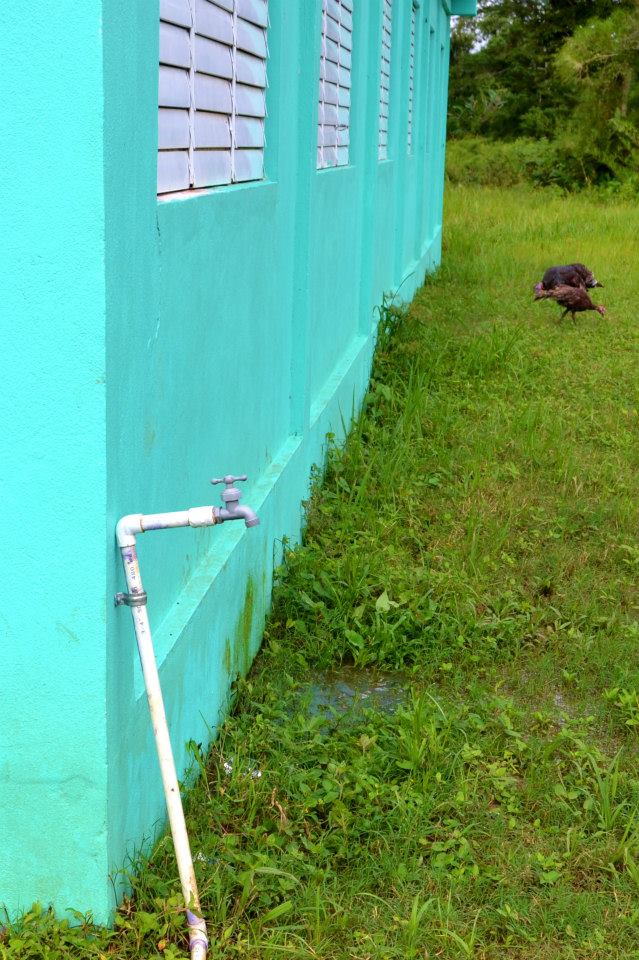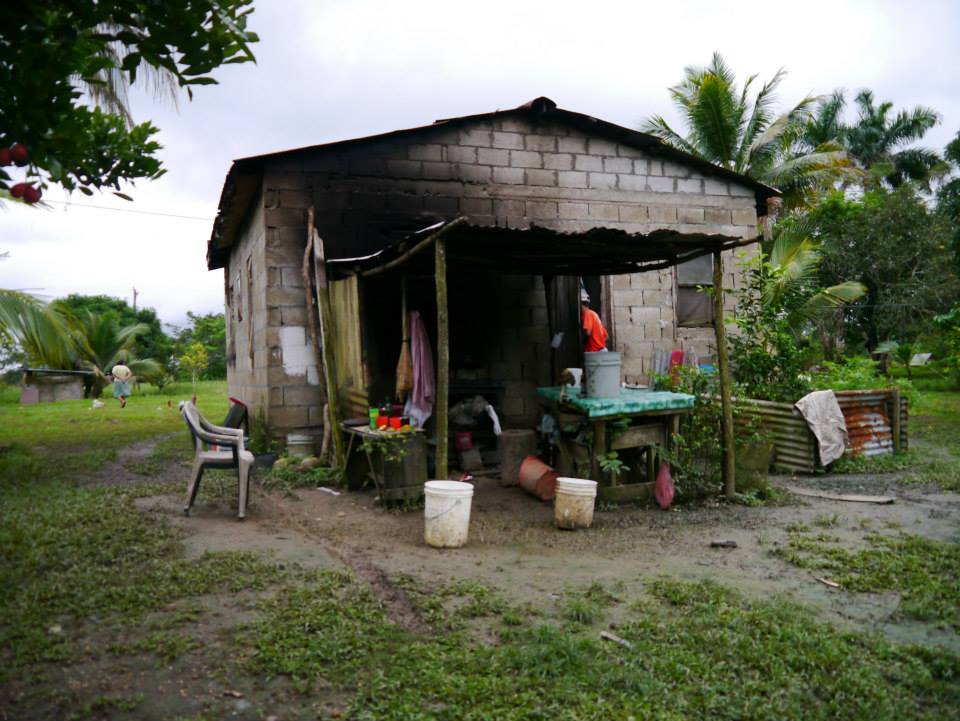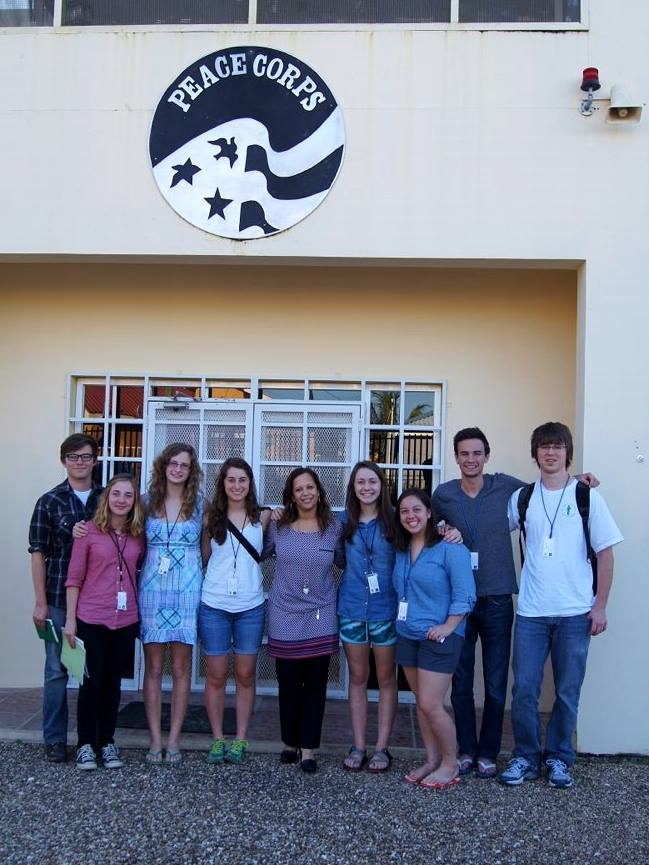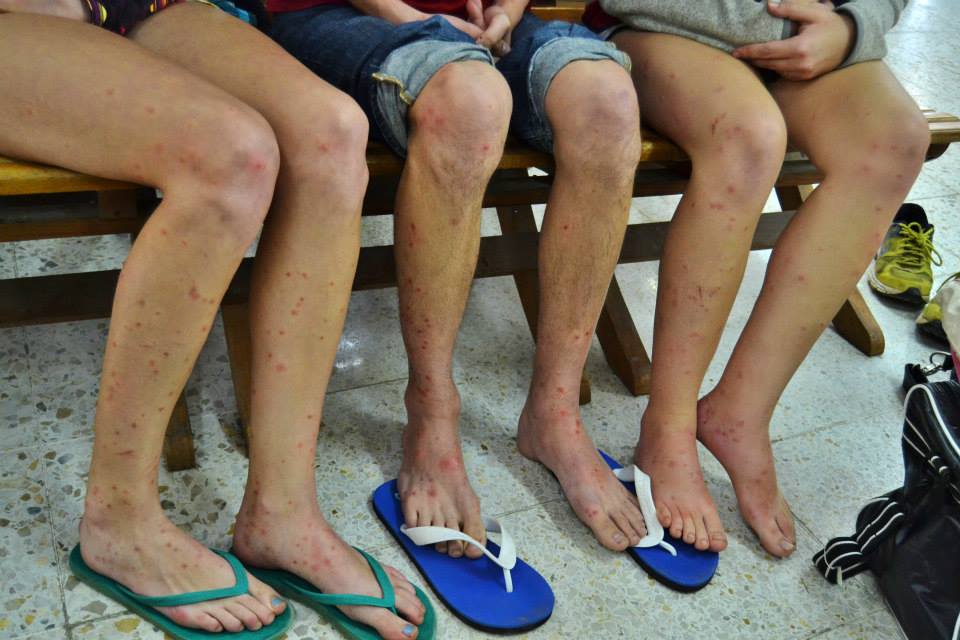Most students spend their winter break relaxing, visiting with family and friends, and logging a good amount of time on the couch; this winter break, a group of engineering students left their homes early and flew more than 1,300 miles away from Fayetteville.
Arkansas Engineers Abroad (AEA) is a student-led organization at the University of Arkansas. Over winter break, eight AEA students, six of them members of the Honors College, went to the village of More Tomorrow in Belize to work on a Clinton Global Initiative University (CGI U) project to improve the water quality in the village. The students plan to improve the water quality by implementing a deep-aquifer well and water tower to replace the current water sources: shallow-aquifer wells, rainwater catchment systems, and the local river, which have tested positive for various contaminants. The project is currently in its final stages; the foundation, piping and drilling of the well have been completed, and this past trip was spent surveying the villagers to assess their health, sanitation practices and water uses. The students also collected water samples from domestic rainwater catchment systems in the village.
During the rainy season, the roads to More Tomorrow are almost impassable, a major reason why More Tomorrow is so poverty stricken. Although the village is only 15 miles outside the capital of Belize, it is often overlooked due to the lack of accessible roads.
AEA students collaborated with locals to make a map of More Tomorrow, which helped the students to build relationships and collaborate with community leaders. Here Jake Pitts (left), an honors mechanical engineering senior, is working with Jose Giron, a pastor in the village.
The students split into groups to survey villagers and to collect water samples. The first group consisted of (left to right): Terrence Sutherland, a past village chairman and translator for the group; Claire Stewart, a freshman civil engineering student who helped to survey the villagers; Jake Pitts, who served as project ambassador, and Erin Cooper, an honors chemical engineering freshman who helped collect water samples.
The second group included (left to right) Kimberly Cribbs, an honors chemical engineering junior who conducted surveys; Jose Giron, the group’s translator; Michael Reinisch, an honors chemical engineering junior who collected water samples, and Sarah Kiner, an industrial engineering freshman who worked with Kimberly to conduct surveys.
The final group consisted of (left to right) AEA’s Peacework coordinator, Colby Lowrey; Max Blanchard, an honors chemical engineering freshman who surveyed the villagers, and Annie Makuch, an honors biological engineering sophomore who spoke Spanish and served as this group’s translator.
The AEA collected water samples to test for the presence of pesticides and heavy metals in the water. This action was taken in response to health concerns the villagers had due to the aerial spraying of pesticides by local farmers. In each tested location, the students took three samples from unfiltered, filtered, and acidified filtered water. The above photo shows a syringe filter used to test the water. These samples will be tested by the Arkansas Water Resources Center Water Quality Lab.
Erin took a water sample from a villager’s rainwater catchment system.
Michael asked Jose questions from the team’s health and sanitation survey.
Annie conducting a health survey in Spanish with the villagers.
While conducting the health and sanitation survey, the students found that a lack of drainage infrastructure in More Tomorrow made it very difficult to travel from house to house during the rainy season. Also, the results of the survey revealed that villagers were sick more frequently during the rainy season. The most common illnesses found in the village were mosquito-borne and water-borne diseases such as malaria, hepatitis, and fungal infections.
This family was described as being the neediest in More Tomorrow. Their house is located in the marshiest part of the village. When the AEA students interviewed the mother, she told them they didn’t have a latrine and that their house was falling apart because of repeated flooding.
The surveys administered by the students documented the villager’s health and sanitation practices. The students have future plans to work with villagers to help implement composting latrines.
Villagers build their own rainwater catchment systems to avoid getting water from the river.
During a past trip to More Tomorrow, AEA students installed a water spigot at the school, which will be connected to the water tower once it’s completed.

Photo by Jake Pitts.
Kimberly showed Jose some drainage ideas from the book Field Guide to Environmental Engineering for Development Workers. The students believe that if they could work with the villagers to develop a drainage plan and obtain the tools they need – primarily, shovels – the villagers would be able to implement their own drainage system rather than continue waiting on the government to help them with infrastructure.
Jake reviewed the water tower plans with village chairman Michael Myvette (left) and Jose.
This was an outdoor kitchen in one of the houses. At some point, the students would like to work with villagers to improve air quality. Interventions related to improving indoor air quality are not as widespread as those designed to improve conditions related to water and sanitation. However, there is a still a substantial need to address this issue in the developing world. According to the Field Guide to Environmental Engineering for Development Workers, “In the developing world, up to 90% of rural households use unprocessed solid fuels for their daily cooking and heating needs. This use can expose inhabitants to high levels of pollutants for 3-7 hours per day.”
This is the home of Terrence Sutherland, one of the students’ translators/guides in the village. His kitchen is located outside, in front of the house; notice the black soot.
The students with Nina Hernández, center, the Peace Corps director for Belize. This photo was taken following their meeting with Nina to describe the health and sanitation conditions in More Tomorrow. Currently, there is no Peace Corps Volunteer (PCV) in More Tomorrow due to safety concerns related to frequent flooding. Nina promised the students that they would put More Tomorrow on the list of places to send Belizean PCVs.
Legs of Erin, Max, and Annie on the last day of AEA’s trip. The majority of the bites are from sand fleas and fire ants.
The next phase of AEA’s involvement in More Tomorrow will be to work with villagers to implement drainage and composting latrines. Together, these two engineering projects will reduce the breeding grounds for mosquitos and the likelihood for water-borne diseases.

